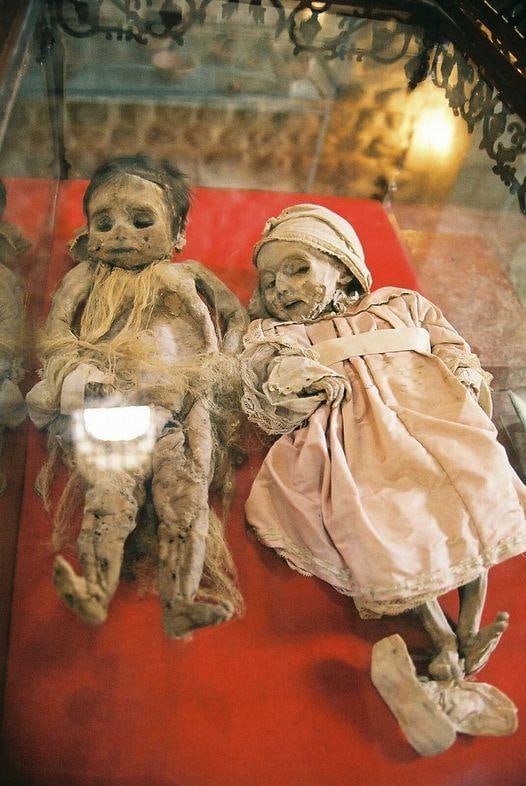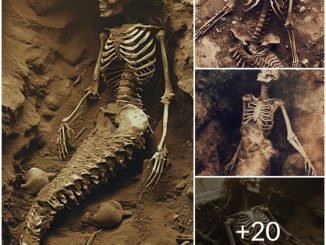Unearthing the Unexpected at the Mint Museum in Potosi
Museums are portals to the past, offering a glimpse into the lives, cultures, and histories that have shaped our world. Among the artifacts and relics, visitors often encounter unexpected and sometimes unsettling discoveries that challenge their perceptions of history. The Mint Museum in Potosi, Bolivia, is no exception. While it is renowned for its extensive collection of artifacts related to the Spanish colonial minting process, one particular exhibit stands out for its macabre nature: the mummified remains of two Spanish children from the 1800s. In this blog post, we will explore the history and significance of these mummified children, delve into the broader context of child mummies, and reflect on the fascinating and often gruesome surprises that museums can hold.

The Mint Museum of Potosi: A Treasure Trove of History
Potosi, Bolivia, is a city steeped in history, largely due to its famous silver mines. Once one of the richest cities in the world, Potosi was a hub of colonial activity and wealth. The Mint Museum, or Casa de la Moneda, stands as a testament to this rich history. The museum is housed in a grand colonial building that dates back to the 18th century, and it offers visitors a comprehensive look at the history of coin production in the region. The museum’s collection includes everything from ancient minting equipment to beautifully crafted coins. However, among these treasures lies a startling exhibit: the mummified remains of two Spanish children from the 1800s, preserved in a glass case for all to see.
The Mummified Children: A Glimpse into a Grim Past
The sight of mummified children in the Mint Museum is both shocking and fascinating. These remains are believed to be those of Spanish children who lived during the colonial era. The mummification process, whether intentional or accidental, has preserved their bodies remarkably well, offering a hauntingly lifelike glimpse into the past. The exact circumstances of their deaths and mummification remain a mystery, but it is speculated that they may have died of natural causes or perhaps from the harsh conditions of life in colonial Potosi. The arid climate and mineral-rich environment of the region likely played a role in their preservation. This exhibit serves as a stark reminder of the mortality and hardships faced by children in colonial times.
The Broader Context of Child Mummies: Cultural and Historical Significance
The phenomenon of child mummies is not unique to Potosi. Throughout history, various cultures have practiced mummification for different reasons, ranging from religious rituals to natural preservation. In some cultures, children were mummified to honor them in death, while in others, their remains were preserved by the environment. For instance, the Inca civilization of South America is known for its child mummies, often associated with ritual sacrifices. In ancient Egypt, mummification was a common practice for both adults and children, aimed at ensuring their passage to the afterlife. The mummified children in the Mint Museum, therefore, connect to a broader historical and cultural narrative about how societies have dealt with death and the afterlife.
Museums: Curators of the Unexpected
One of the most compelling aspects of visiting museums is the element of surprise. Museums curate and preserve a vast array of artifacts, many of which hold stories that are both fascinating and unsettling. The mummified children of the Mint Museum are a prime example of how museums can reveal the darker, more poignant aspects of history. These exhibits challenge visitors to confront the realities of the past, prompting reflection and a deeper understanding of historical contexts. Museums play a crucial role in educating the public, not only about the grandeur and achievements of past civilizations but also about their struggles and tragedies.
Conclusion: The Intriguing World of Ancient Discoveries
The mummified children of the Mint Museum in Potosi, Bolivia, serve as a haunting yet important reminder of the complexities of history. Their presence in the museum highlights the often grim realities faced by children in colonial times and connects to a larger tradition of mummification across cultures. Museums like the Mint Museum are invaluable in preserving and presenting these narratives, offering visitors a chance to engage with the past in a profound and personal way.
As we conclude this exploration of the unexpected finds in museums, it’s worth noting that these institutions are treasure troves of ancient discoveries. From the mummified children of Potosi to the myriad other artifacts found in museums worldwide, each exhibit offers a unique story and a glimpse into the lives of those who came before us. These discoveries continue to captivate and educate, reminding us of the rich tapestry of human history and the enduring quest to understand our past. Whether you’re a seasoned historian or a curious visitor, the next time you step into a museum, remember that you might just encounter something that changes your perspective on history forever.
4o


